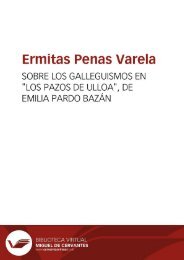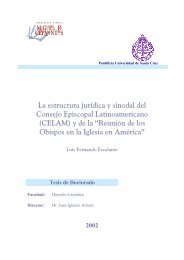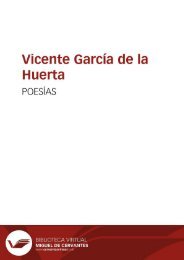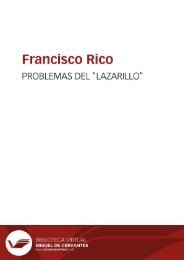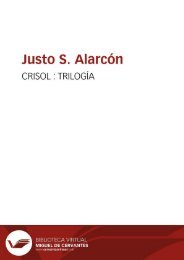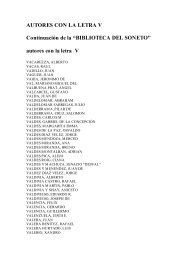Create successful ePaper yourself
Turn your PDF publications into a flip-book with our unique Google optimized e-Paper software.
Anales galdosianos [Publicaciones periódicas]. Año XII, 1977<br />
reconocidas y acatadas por el grupo, como los dechados de humanidad a que cada individuo pretende<br />
ceñirse. 194<br />
The literary allusions examined by Ayala are to isolated and individual characters. I would like to<br />
suggest, however, that equally important are the allusions made throughout the novel -again with<br />
equal deliberateness- to stock literary situations and formulas. Let us look at some of these.<br />
Don Lope Garrido may have been a swashbuckling figure and a great lover at one time but that is<br />
all in the past. He retains only a haughty hidalguía , an echo of another age. When we meet him he<br />
is fifty-seven, «que no por bien conservados eran menos efectivos», (V, 1541). Soon his efforts to<br />
safeguard his union with Tristana by appearing and acting youthful only serve to achieve the opposite<br />
results. The girl, <strong>Galdós</strong> tells us, « bruscamente vio en Don Lope al viejo », (V, 1548). Poverty and<br />
old age overtake him; he acquires a persistent cough, rheumatism and chest congestion. « Y para<br />
colmo de desdichas, veíase precisado a dormir con la cabeza envuelta en un feo pañuelo, y su alcoba<br />
apestaba a los mejunjes que usar solía para el reúma o el romadizo », (V, 1552).<br />
Thus we have the disparity of ages in a marriage, a stereotyped situation which appears in so many<br />
literary works dating back to Roman comedy, the farces and fabliaux of the Middle Ages, and, in<br />
Spain, the traditional ballads of « la mal maridada ». Most important, this same situation is recreated<br />
time and again by Cervantes: in his exemplary novel, El celoso extremeño and particularly in his<br />
entremeses, El viejo celoso, La cueva de Salamanca , El juez de los divorcios . Mariana, the young<br />
wife in the last mentioned work, bemoans her married state and pleads for a divorce « porque no<br />
puedo sufrir sus impertinencias, ni estar de continuo atenta a curar todas sus enfermedades, que son<br />
sin número, y no me criaron a mí mis padres para ser hospitalera ni enfermera ».<br />
The basic elements of the formula are all in Tristana , although, as we shall see, many are altered and<br />
even subverted. Chapter VI, for example, sums up the many facets of the conventional circumstance:<br />
the heroine is a prisoner in her own home -« cautiva infeliz » the narrator calls her-.; her guardian,<br />
unsure of himself, is jealous and watches over her with zeal. Tyrant and captive, « el viejo y la niña<br />
», live in. fear of one another. Suspicious, he questions her persistently and threatens her: « Si te<br />
sorprendo en algún mal paso te mato, cree que te mato », (V, 1552). Succeeding stock developments<br />
follow: the young man who will catch the heroine's eye, (he clever and mischievous servant who will<br />
serve as go-between.<br />
194 Ibid. , p. 93.<br />
143







